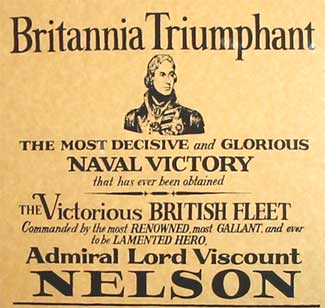
Achille. Africa. Agamemnon. Ajax. Belleisle. Bellerophon. Britannia. Colossus. Conqueror. Defence. Defiance. Dreadnought. Entreprenante. Euryalus. Leviathan. Mars. Minotaur. Naiad. Neptune. Orion. Phoebe. Pickle. Polyphemus. Prince. Revenge. Royal Sovereign. Sirious. Spartiate. Swiftsure. Temeraire. Thunderer. Tonnant. Victory.
The final name in that list should be the giveaway even if you weren't paying attention in history class: they're the names of the 27 Ships-of-the-Line and six support ships of Nelson's fleet in the Battle of Trafalgar. It also happens to be the name of 33 woods planted across Great Britain and Northern Ireland by the Woodland Trust as part of its Trafalgar Woods project. Started in 2005 to mark the bicentennial of Nelson's famous victory over the Spanish and French fleets, the project has seen over 250,000 new trees planted, celebrating the link between British timber and its maritime history.
It is estimated that 6,000 trees went into the building of HMS Victory, 90% of which were oak, with pine, fir, elm and Lignum Vitae used in finishings. Construction began in 1759 but, thanks in part to the end of the Seven Years War, Victory's frame was uniquely left to season for three years (rather than the standard few months), which many believe was a key factor in the ship's longevity.
The Trafalgar Woods aren't the first time that trees have been planted to commemorate a Nelson victory: the Nile Clumps on Salisbury Plain mark his 1798 defeat of the French in the Battle of the Nile. Planted by Charles Douglas, 6th Marquess of Queensbury on his own estate near Stonehenge, the beech trees were built in clumps representing the positions of the French and British ships in the battle. Of an original 26 clumps, 17 still remain.
The trees are sometimes falsely referred to as the Trafalgar Clumps, although it is obvious that they do not refer to the position of ships at Trafalgar. Nelson's unorthodox tactic at Trafalgar was to puncture the Franco-Spanish line by driving his fleet perpendicularly through the enemy formation at two points, rather than coming alongside it in single file, as was the norm. So the trees on Salisbury Plain would more closely resemble a 'hash' symbol than two parallel lines had they been planted in honour of the later battle.

No comments:
Post a Comment